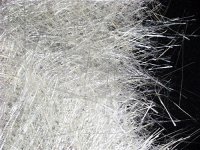andyatos
Well-Known Member
Got a couple of quick questions. First, let's say I create a more gentle angle where the mast tube meets the mast step pot with West System epoxy and filler so it will be easier to lay up the cloth later over this transition area. See the photo below of my simulation test.

Here's my first question. How long should I let this epoxy and filler mix... or your standard epoxy and cloth combination... cure before I mechanically key it, vacuum it, acetone it and then start laying the next step of fiberglass cloth and resin over it? Specifically, what would be the minimum time I should allow for curing time? I ask because I want to do the steps one after another as quickly as I can to get this project done.
Second question. Let's use Voodoo's recommendations for example of laying up cloth running vertically down the bottom of the mast tube, past the transition and out on to the floor of the hull, with the first phase being sections of cloth at 12 o'clock, 3 o'clock, 6 and 9. Then the next phase doing the same at 1:30, 4:30, 7:30, etc, and all the steps that follow.
Should I do just one phase, let that cure then key it, prep it then do the next phase? Or in contrast, could a guy just keep on laying the subsequent phases one after another in one, long continuous session until the entire mast step project is done?
Accounting for mixing new batches of resin and hardener of course.... and flipping the boat over to do the top of the mast tube... and getting burned out on doing the work for hours on end.
Thanks,
- Andy
Here's my first question. How long should I let this epoxy and filler mix... or your standard epoxy and cloth combination... cure before I mechanically key it, vacuum it, acetone it and then start laying the next step of fiberglass cloth and resin over it? Specifically, what would be the minimum time I should allow for curing time? I ask because I want to do the steps one after another as quickly as I can to get this project done.
Second question. Let's use Voodoo's recommendations for example of laying up cloth running vertically down the bottom of the mast tube, past the transition and out on to the floor of the hull, with the first phase being sections of cloth at 12 o'clock, 3 o'clock, 6 and 9. Then the next phase doing the same at 1:30, 4:30, 7:30, etc, and all the steps that follow.
Should I do just one phase, let that cure then key it, prep it then do the next phase? Or in contrast, could a guy just keep on laying the subsequent phases one after another in one, long continuous session until the entire mast step project is done?
Accounting for mixing new batches of resin and hardener of course.... and flipping the boat over to do the top of the mast tube... and getting burned out on doing the work for hours on end.

Thanks,
- Andy



